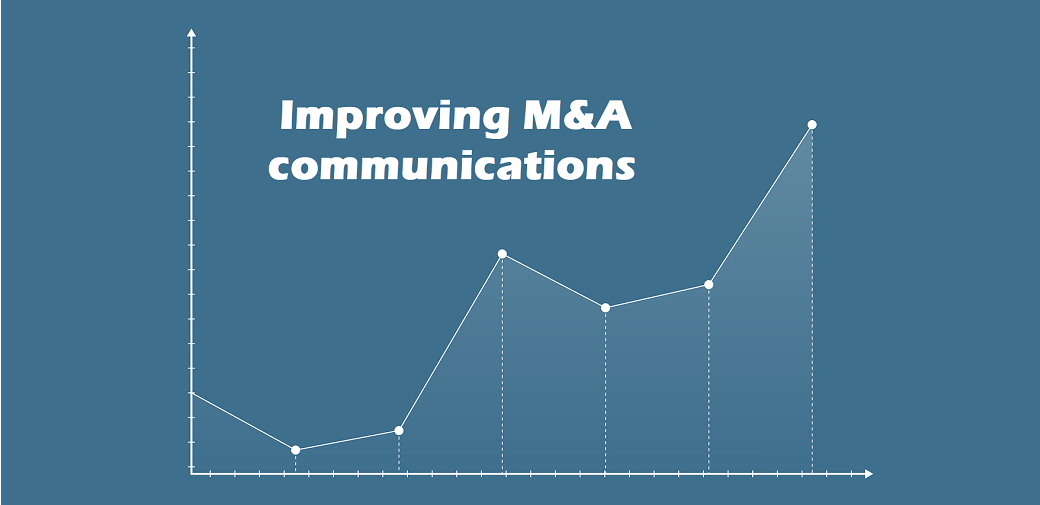“We don’t know what’s going on,” said Suzanne K., a director of product development at a recently merged telecomm giant.
I am always struck by comments like Suzanne’s given that we all walk around with dozens of communications devices at our fingertips. Suzanne and her team are not alone feeling this way. Decades of merger-related reorganizations and down-sizing puts everyone a little on edge. A PwC survey about the impact of M&A revealed that only 42% of respondents believe M&A was good for employees. Adverse employee sentiment, including statements like Suzanne’s, start with inconsistent communications.
The C-suite is often surprised by communication deficit related remarks. After all they’ve checked a lot of boxes. They’ve hosted big post-close events or taped an employee video or held town meetings with new sites and employees.
Even so, this communication is too frequently a “one and done.” It doesn’t feel that way to those executives who are getting on airplanes and shaking hands for weeks after a close.
What gets lost in the shuffle is a critical success factor for M&A communications: leaders need to message frequently and with integrity. For example, the CEO cannot stand up at an employee event 120 days after a deal’s close and say that “everything is going great,” then announce an earnings shortfall two weeks later.
The key to communication post-M&A is relatively straightforward. The scope and frequency of communications need to help employees place their experience in a “new” broader organizational context. A conflict can arise in establishing this context since leadership’s tendency is to stay silent on in-flight milestones, particularly if their outcome is uncertain or outside of original expectations.
Establishing an organizational context for our employees is an evolution not an event. In a perfect M&A world, employers would hand managers a communications cascade kit, a messaging platform that could be used again and again by leaders so that key messages are delivered and reinforced. Cascade platforms typically get refreshed regularly with milestone achievements from the deal’s integration activities.
So, what’s a leader to do if cascade platforms are absent? There is a two-step do-it-yourself approach that leaders can create to ensure that teams stay on track and feel engaged.
- First, create a summary slide of the deal’s specifics.
- Second, engage your team in keeping the slide up to date.
Think of it like your team’s own, “Heard on the Street …” slide. The first step features facts gathered from post-close communications and other special events. Be sure to stick to the facts as originally presented by leadership. This is a summary, not a commentary. Consider including the deal’s size, commitments to employees or customers, and the deal’s stated outcome or intention.
For example, your “‘Heard on the Street” slide might highlight “Additional product lines to be added to our core commercial business.” Or, “Deal delivers state-of-the-art call center capacity in St. John’s, Newfoundland, Canada.”
The most important step in the DIY approach is empowering your team to keep it up to date. Start group calls or meetings with updates or any commentary that would illustrate progress on the featured points. Who knows, someone on the team may have attended a customer roll-out event for the newly expanded product line.
Your DIY solution will not answer all of your employee’s questions. It will however help refresh the organizational context necessary for your team to succeed. And who knows, your team might just get recognized on the next all-hands webinar for their thoughtful questions about senior leadership’s remarks.
Linda Rossetti is a Harvard MBA, serial entrepreneur and expert on transition and its impact on individuals and organizations.
If you enjoyed this article, sign up for SmartBrief’s free e-mails on leadership, finance executives and HR, among SmartBrief’s more than 200 industry-focused newsletters.
